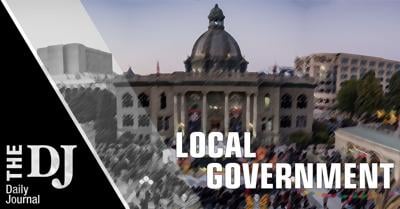Officials and residents will come together during the first formal discussion and review of the environmental documents laying groundwork for overhauling Burlingame’s master planning policy.
The Burlingame Planning Commission will discuss Wednesday, July 11, the draft environmental impact report and a proposed general plan amendment, defining the city’s future development targets.
Officials have spent roughly three years setting the stage for the dialogue working toward the first update of the general plan in more than two decades, and are now leaning on input from the community to take the next crucial step, said Community Development Director Kevin Gardiner.
“People see the importance of this and recognize this is something that we need to work on as a community,” he said. “So this is our first chance to set some priorities and direction.”
Though it is difficult to understate the plan’s influence over future development policy, as zoning changes are an essential outcome of the process, one of the more notable components is a proposal to facilitate residential growth in new areas of the city.
Under that effort, planning commissioners last year addressed a map proposing construction of new homes and businesses in underdeveloped portions of Rollins Road which had previously been preserved for other uses.
Officials have identified the area along the city’s northern border as a preferred growth site, primarily due to its proximity to the Millbrae BART station, which could make it an ideal location for transit-oriented development.
While officials seemed initially amenable to such suggestions, Gardiner has noted discussions on the issue revolved around a central question — how big should Burlingame become in the future?
Answers will likely address Burlingame’s affordability crunch, as the community continues to grapple with an imbalance of job growth generated during the ongoing economic boom and the inadequate amount of opportunities for workers to live locally.
The Association of Bay Area Governments, or ABAG, has claimed in its Regional Housing Need Allocation study that Burlingame should construct an additional 850 units to accommodate anticipated demand.
While the city holds no absolute obligation to meet such a projection, officials have said they recognize more should be done to accommodate those wishing to move to Burlingame, as well as existing residents who are established community members.
As some may hold diverging opinions on the best approach to residential development, officials must work to strike a delicate balance facilitating a community’s evolution while also keeping an eye to existing quality of life concerns.
Appropriately addressing such an issue is no small task, admitted Gardiner, who called on the public to help officials move Burlingame into the future.
“We are hoping to get good engagement from the community, and get comments and input on the plan,” he said.
Another central issue to be addressed during the update is sea level rise, and ways the environment could affect future growth, especially along the Bayshore, said Gardiner.
He said much of the feedback officials have received from residents on the plan and report so far deals with sea level rise and sustainability, which will also be a cornerstone of the city’s future policy.
“What we see needing to happen in the coming decades, as part of a regional effort, is to figure out adaptation to changes in the climate and sea level,” he said. “The general plan provides that first policy direction with the understanding that there is more detailed work yet to come.”
Under such an expectation, Gardiner said the upcoming discussion will be the first in a series and the initial meeting will likely serve as an introduction to the process.
“This is the first time Burlingame has updated the general plan in a very long time and it is not something that cities do that frequently, so there’s always a bit of a learning curve,” he said. “Both for our commission and community, this is not something we are used to doing. So the first meeting is to familiarize people.”
Gardiner said he is hopeful to build the conversation from this meeting into an ongoing dialogue inviting more detailed feedback from residents who may have perspectives to share on community development.
“The first meeting is an orientation and a chance to get people thinking about it,” he said. “We will progressively get more into the plan and the [environmental impact report] and get peoples’ particular comments going forward.”
The Burlingame Planning Commission meets 7 p.m. Wednesday, July 11, in City Council chambers, 501 Primrose Road.



























(0) comments
Welcome to the discussion.
Log In
Keep the discussion civilized. Absolutely NO personal attacks or insults directed toward writers, nor others who make comments.
Keep it clean. Please avoid obscene, vulgar, lewd, racist or sexually-oriented language.
Don't threaten. Threats of harming another person will not be tolerated.
Be truthful. Don't knowingly lie about anyone or anything.
Be proactive. Use the 'Report' link on each comment to let us know of abusive posts.
PLEASE TURN OFF YOUR CAPS LOCK.
Anyone violating these rules will be issued a warning. After the warning, comment privileges can be revoked.